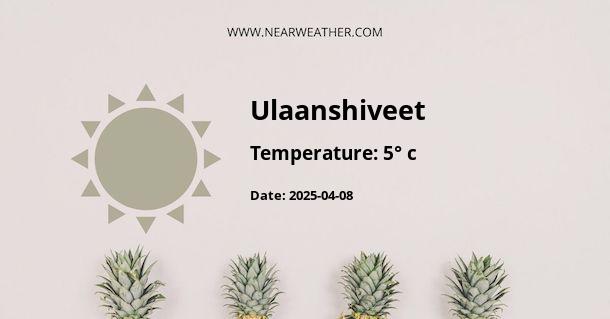Ulaanbaatar, Mongolia: Climate and Weather Overview
Ulaanbaatar, the capital city of Mongolia, experiences a continental climate characterized by long, cold winters and short, warm summers. Situated in the heart of Asia, Ulaanbaatar's climate is heavily influenced by its high elevation and its distance from any major body of water.
Seasonal Climate Patterns
Let's take a closer look at the seasonal climate patterns in Ulaanbaatar:
Winter (December - February)
Ulaanbaatar's winter is extremely cold, with temperatures often plummeting well below freezing. The city is known for its significant snowfall during this time, which contributes to the picturesque snowy landscapes but also brings about challenges for transportation and infrastructure. The average high temperatures range from -10°C to -15°C (14°F to 5°F), while the lows can drop to -20°C to -30°C (-4°F to -22°F).
Spring (March - May)
Spring in Ulaanbaatar is short but marked by a noticeable increase in temperatures. However, it can still be quite chilly during the early part of the season, with occasional snowfall even in March. As the season progresses, temperatures gradually rise, and the city starts to see the emergence of vibrant greenery and blossoming flowers. Average highs range from 2°C to 12°C (36°F to 54°F), with lows between -8°C to 0°C (18°F to 32°F).
Summer (June - August)
Ulaanbaatar's summer is brief but relatively mild. July is the warmest month, with average high temperatures reaching around 24°C (75°F). The city experiences longer daylight hours during this time, allowing for outdoor activities and festivals. However, temperatures can drop significantly during the night, with average lows ranging from 8°C to 12°C (46°F to 54°F).
Autumn (September - November)
Autumn brings about a swift change in weather as temperatures start to decrease, and the city's landscapes transform into vibrant shades of red and gold. It is a pleasant time to visit Ulaanbaatar as the weather is cool and the city hosts various cultural events and celebrations. Average highs range from 5°C to 15°C (41°F to 59°F), while lows drop to -3°C to 3°C (27°F to 37°F).
Precipitation
Ulaanbaatar experiences low to moderate levels of precipitation throughout the year. The majority of the city's annual precipitation falls during the summer months, with July being the wettest period. Snowfall is particularly significant during the winter, contributing to the city's snow-covered landscapes.
Extreme Weather Events
Ulaanbaatar is susceptible to extreme weather events, particularly during the winter months, when heavy snowfall and blizzards can impact transportation and daily activities. The city also experiences occasional dust storms, known as "khazhins," which are more prevalent during the spring and can lead to reduced visibility and air quality issues.
Climate Data for Ulaanbaatar
Here's a summary of the average climate data for Ulaanbaatar:
| Month | Average High (°C) | Average Low (°C) | Precipitation (mm) |
|---|---|---|---|
| January | -15 | -26 | 3 |
| April | 11 | -2 | 7 |
| July | 24 | 12 | 90 |
| October | 9 | -4 | 8 |
Source: World Weather Online
Conclusion
In conclusion, Ulaanbaatar's climate is defined by its extreme seasonal variations, with frigid winters, mild summers, and brief transitional seasons. Visitors to the city should be prepared for temperature fluctuations and the possibility of encountering extreme weather events, particularly during the winter months. Understanding Ulaanbaatar's climate patterns is essential for anyone planning to visit or live in this unique and culturally rich city.
A - Ulaanshiveet's Latitude is 47.289478 & Longitude is 103.856590.
A - Weather in Ulaanshiveet is -16° today.
A - Climate Conditions in Ulaanshiveet shows few clouds today.
A - Humidity in Ulaanshiveet is 81% today.
A - Wind speed in Ulaanshiveet is 8.93 km/h, flowing at 276° wind direction. today.
